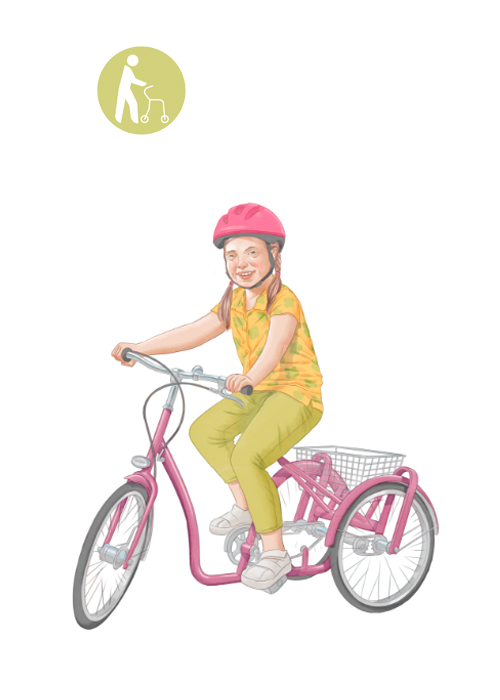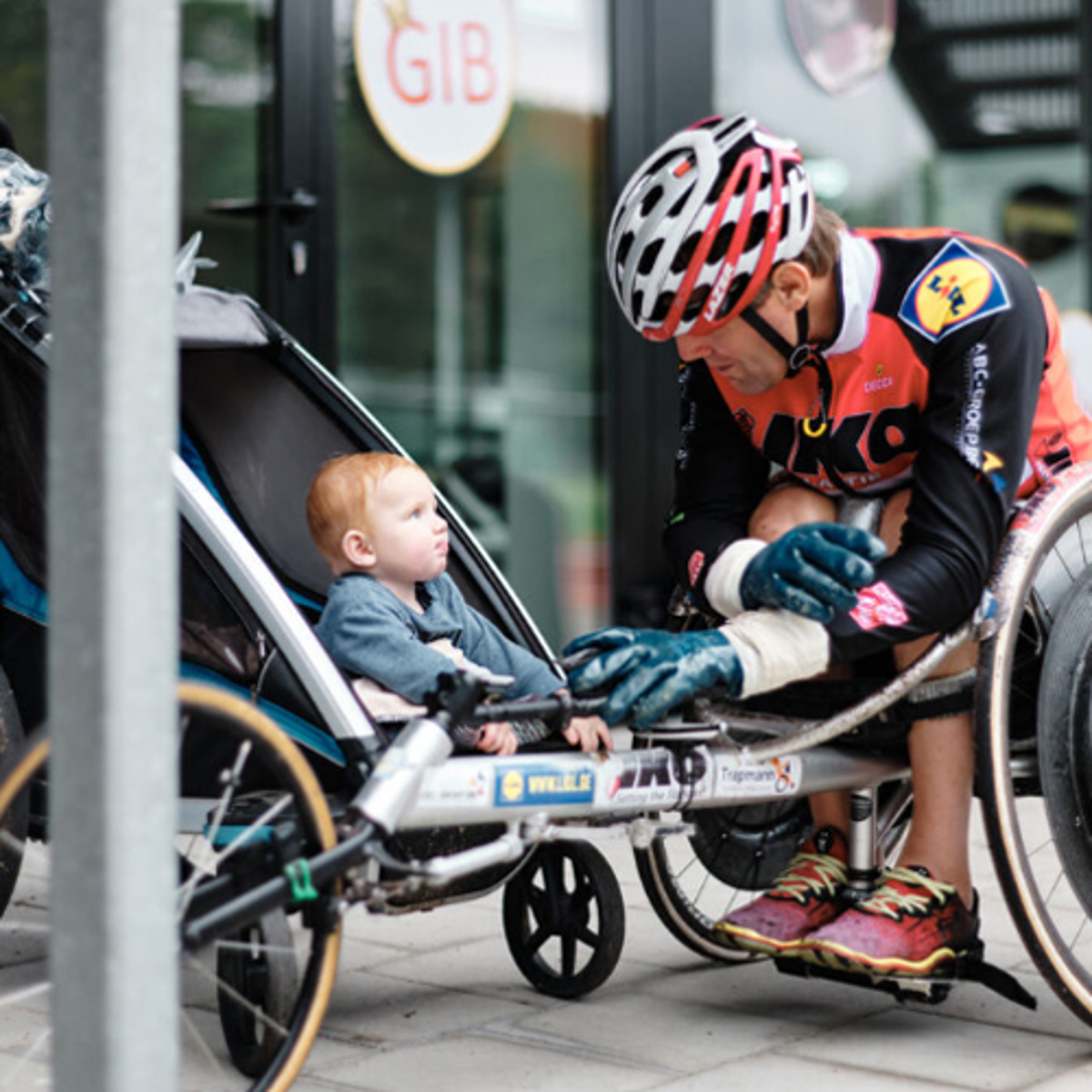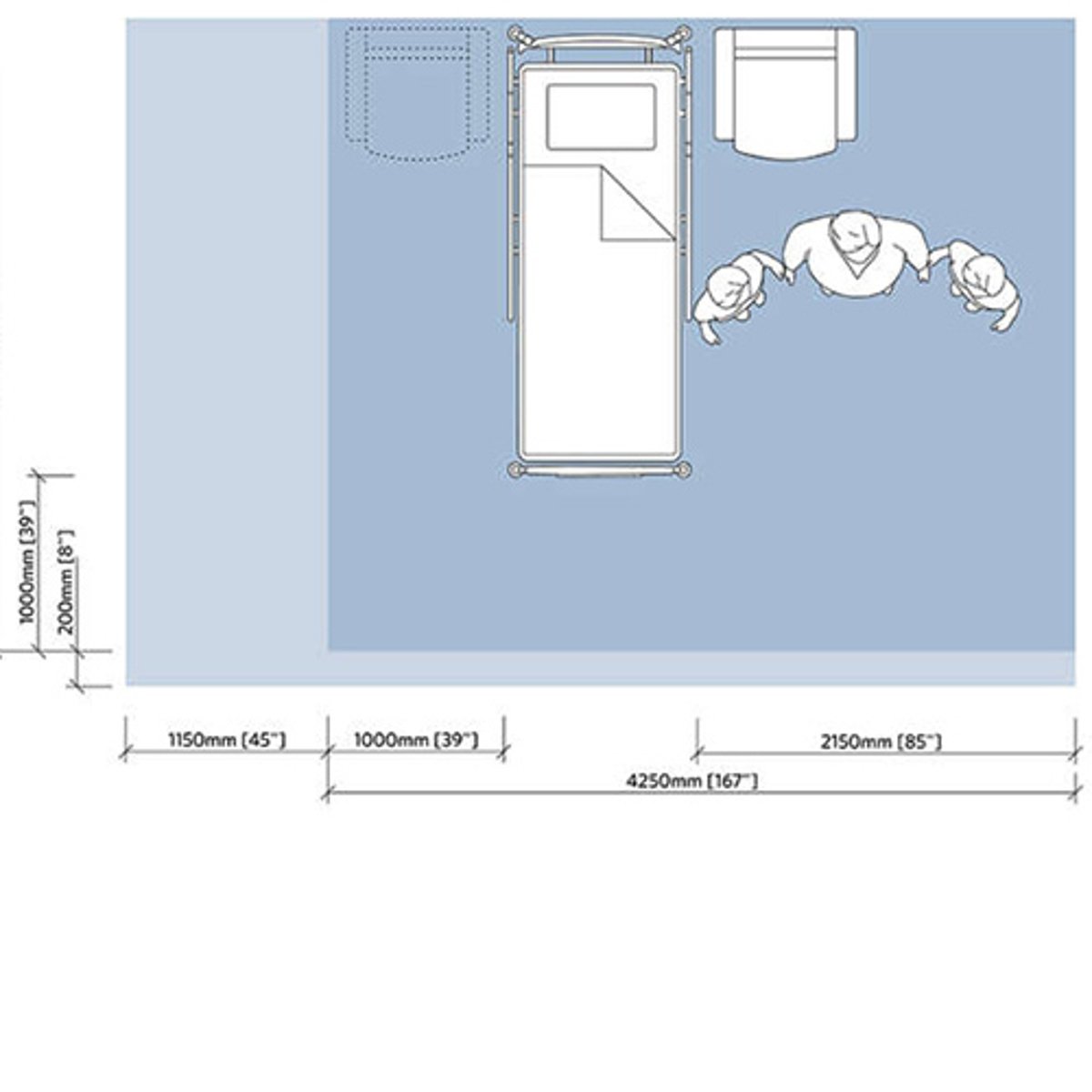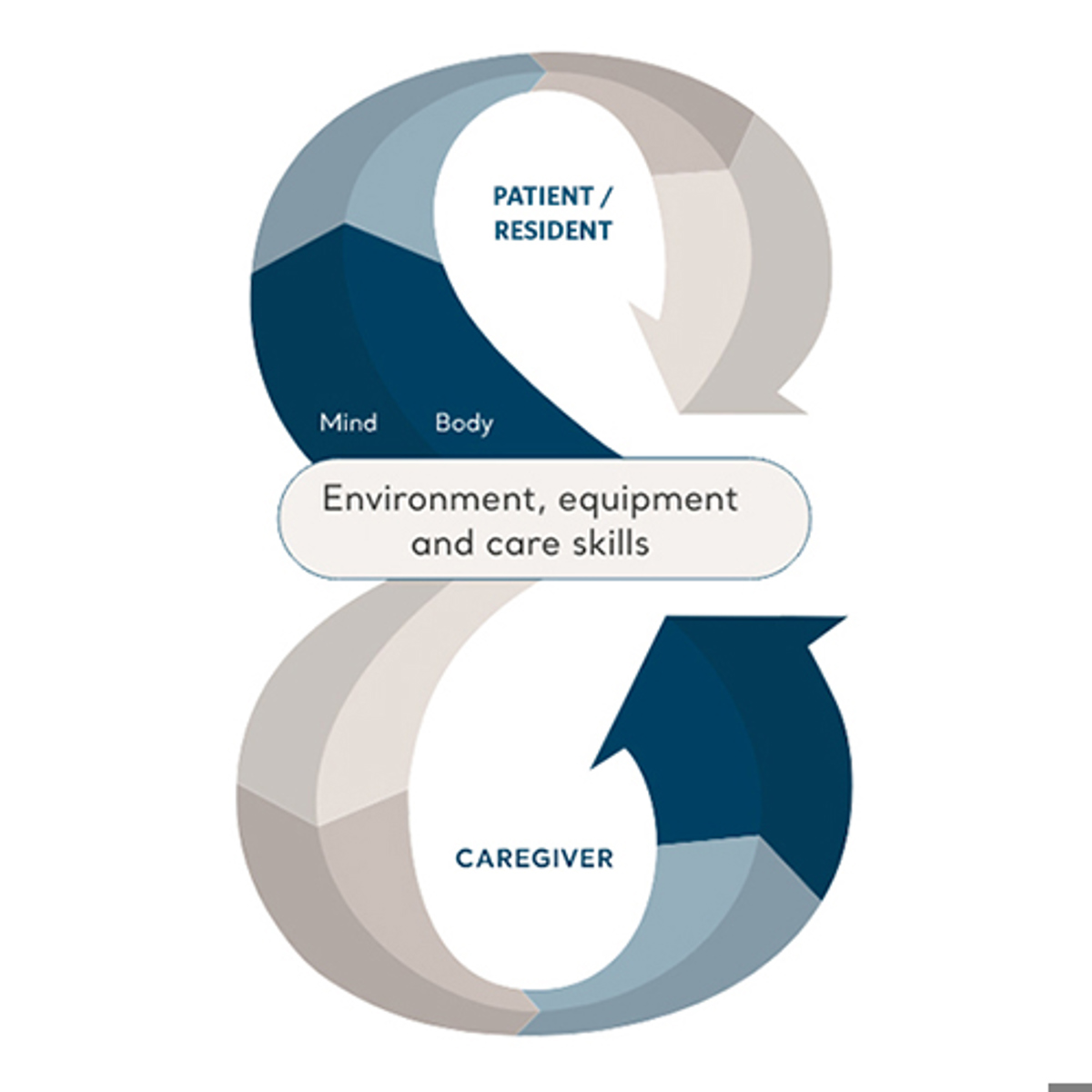
Barbara
Barbara needs special consideration when it comes to her balance
Barbara is less mobile and has less stamina and reduced balance compared to Albert. Barbara is depicted riding a tricycle rather than a bicycle to highlight the fact that she needs special considerations to maintain her balance. If Barbara was walking then she would need to support her weight with her hands using a walking device.
- Needs a walking device when standing up
- Dependent on the caregiver in some situations
- A risk of static overload may occur for example during assistance with daily hygiene activities
- Her t-shirt is yellow to show that although she presents a slightly higher risk of static and dynamic physical overload to caregivers than Albert, it is still a low risk
- Stimulation of functional mobility is very important

Empowering Movement
The mobility gallery plays a key role in empowering movement in both acute and long-term care, by enabling an assessment of an individual’s level of mobility, and how this will impact the quality of care.

Designing for Barbara
Arjo collaborates closely with architects, nursing home executives, safe patient handling experts, residents and relatives, allowing us to successfully design spaces to suit the individual patient’s needs.

The Positive Eight
The Positive Eight philosophy visualises the potential positive effects that arise from improving or maintaining a person’s mobility through application of the best care skills, an efficient work environment and the proper equipment.